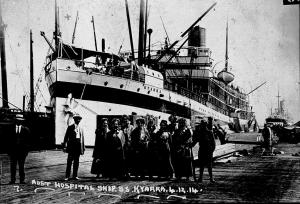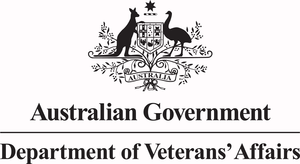Sister Dorothy Cawood – Marilyn (soprano)
Dorothy Cawood (1884 – 1962) undertook her nursing training between 1909—1913 at the isolated Coast Hospital at La Perouse, famous for turning out ‘tough’ nurses.
Dorothy enlisted in the Australian Imperial Force on 14 November 1914 as a staff nurse in the Army Nursing Service, and embarked on HMAT Kyarra 28 November 1914 with the second convoy from Australasia. She arrived Egypt, and was based at the 2nd Australian General Hospital (2AGH) at Mena and Ghezireh, on the outskirts of Cairo, where she served during the Gallipoli campaign. In December 1915 she was promoted to Sister.
Following the wind-down of the Gallipoli campaign, Sister Cawood embarked for France with the 2AGH and served at Marseilles and Wimereux, near Boulogne. She was also briefly attached to the 8th Stationary Hospital and the Australian Voluntary Hospital before returning to 2AGH in July 1916.
By December 1916 Sister Cawood’s nursing duties brought her closer to the front and into more immediate danger. Nursing at the 2nd Australian Casualty Clearing Station at Trois Arbres near Armentières during July 1917, Sister Cawood along with Sisters Clare Deacon, Alice Ross-King and Staff Nurse Derrer, risked their lives to rescue patients trapped in burning buildings after a German air raid. In September the four became the first members of the Australian Army Nursing Service to be awarded Military Medals, the highest military honour then granted to a woman. Dorothy later wrote to her parents: ‘Do not blame me for this. It is Fritz’s fault. He will do these dastardly tricks’.
(Sister Cawood received her medal in a ceremony at Buckingham Palace on February 13th, 1919.)
On 1 August Sister Cawood was transferred to the 38th Stationary Hospital at Calais and, in November, to the 6th Australian General Hospital. While serving there she was mentioned in dispatches for ‘distinguished and gallant service in the field’. Not long afterwards Sister Cawood was transferred to the Genoa, Italy, with the 38th Stationary Hospital. She was hospitalised with tonsillitis for a few months in 1918, but served in Genoa until January 1919. She was then transferred to Australian Auxiliary Hospitals in England until her repatriation in May, 1919.
Sister Cawood returned to Sydney after more than four years overseas. After being demobilised she worked in the State Hospital at Liverpool, New South Wales, before becoming matron of the David Berry Hospital in Berry. She retired in 1943 and the following year returned to Parramatta where she lived until her death in 1962. She had never married and was buried in Sydney’s Rookwood cemetery.
I have the vaguest childhood memory of a small lady, rather severe in aspect to a small child. My uncle remembers her as being very softly spoken.
The interest in this story lies in its window on the WWI nursing service. This award of the Military Medal to Australian nurses was not controversial at the time, but is now. Our nurses officially held officer status. The Military Medal was for soldiers, not officers. Officers (including other non-combatants) were awarded the Military Cross for gallantry in action. There were only seven Military Medals awarded to Australian nurses. Historians say that there is no doubt that the award of those Military Medals to that very select group of nurses was an act of discrimination; they should all have been Military Crosses.
Sister Cawood was also awarded the ARRC—Royal Red Cross, a highly esteemed award for military nursing. Only about 7,000 ARRCs have been awarded throughout the British Empire and British Commonwealth from its institution in 1883 to the present day. The corresponding figure for the Victoria Cross is about 1,000. It is interesting to note that this year is also the Centenary of the Australian Red Cross.
Marilyn
Sister Cawood’s war service is commemorated at Parramatta and District Great War Roll of Honour, and at St Johns Anglican Cathedral Parramatta – Memorial Arch
More information about the events of 22 July 1917
Excerpt of diary entry by Sister Alice Ross-King http://throughtheselines.com.au/research/alice-ross-king
Australian War Memorial entry for Sister Dorothy Cawood http://www.awm.gov.au/people/P10676555/










Seeking information on Chesney Garnet Cawood, born 1883, died 1969. He was a NSW country schoolteacher, who was Headmaster of Wirrebelah School, near Gunnedah for 30-40 years. Information required for a book on Gunnedah and district identities.